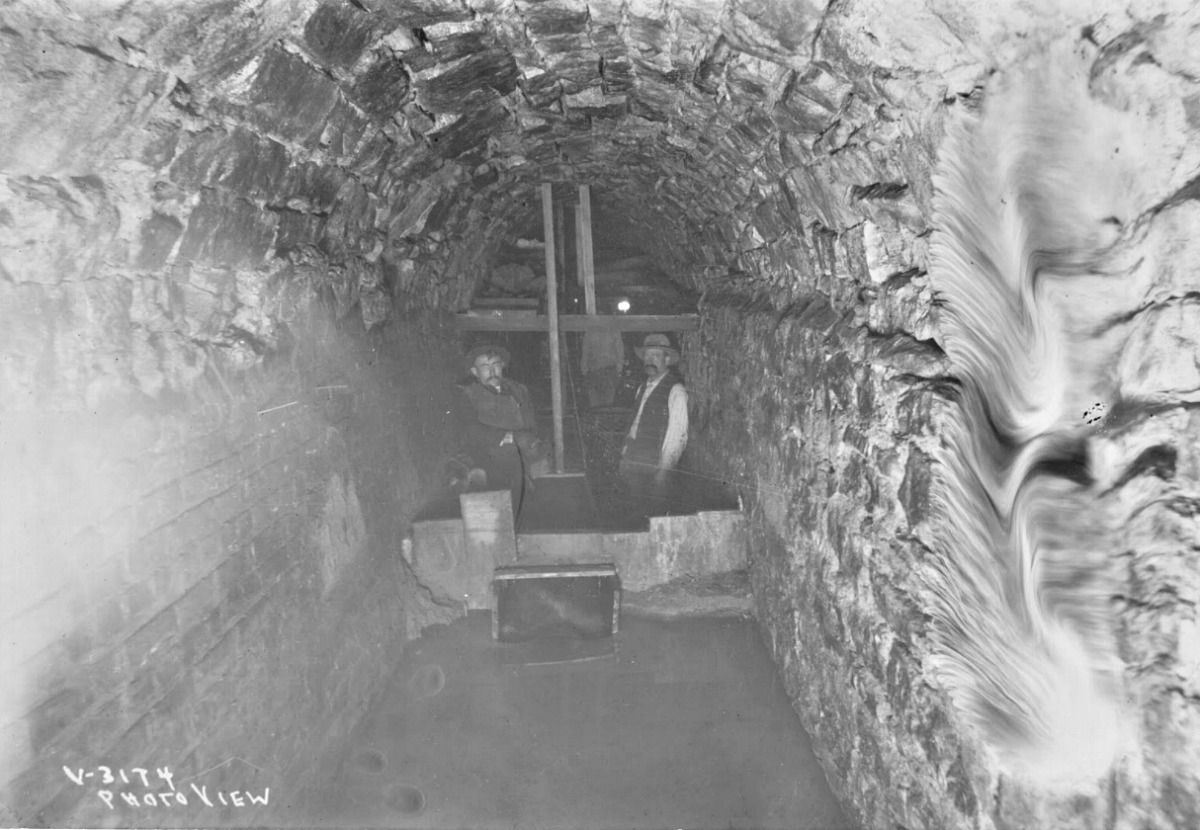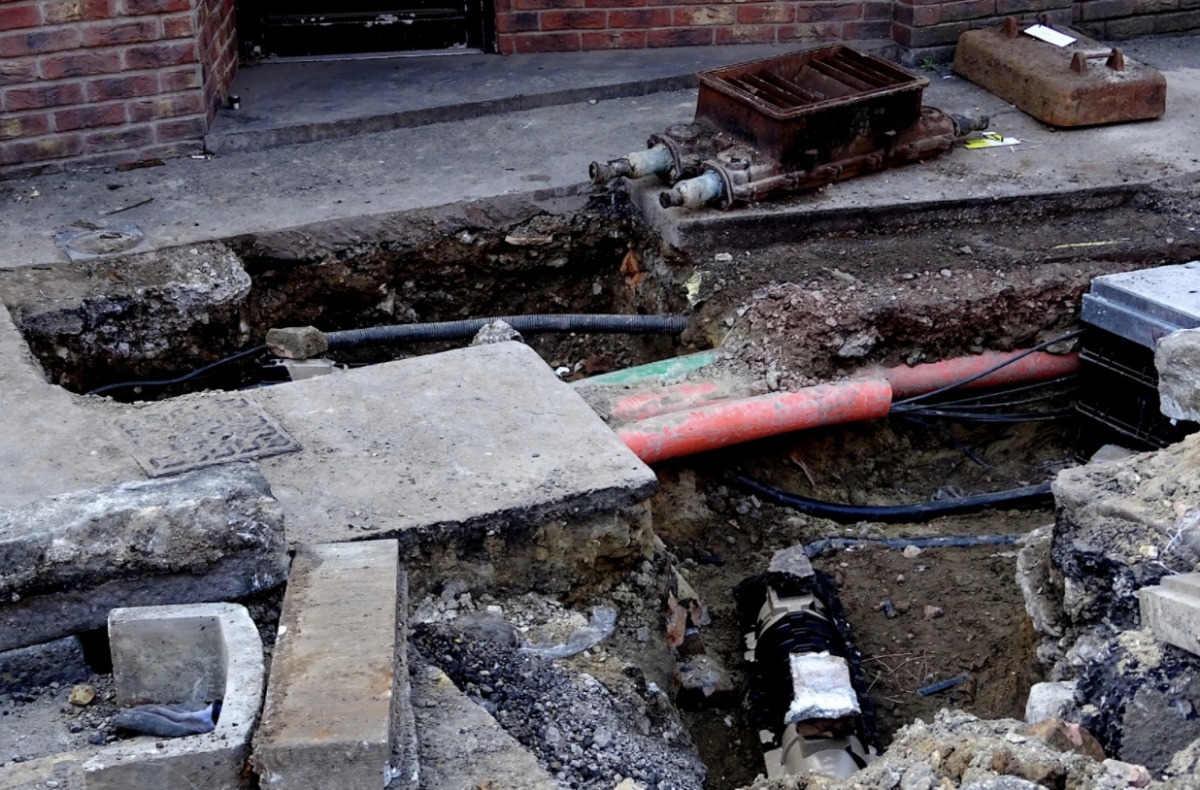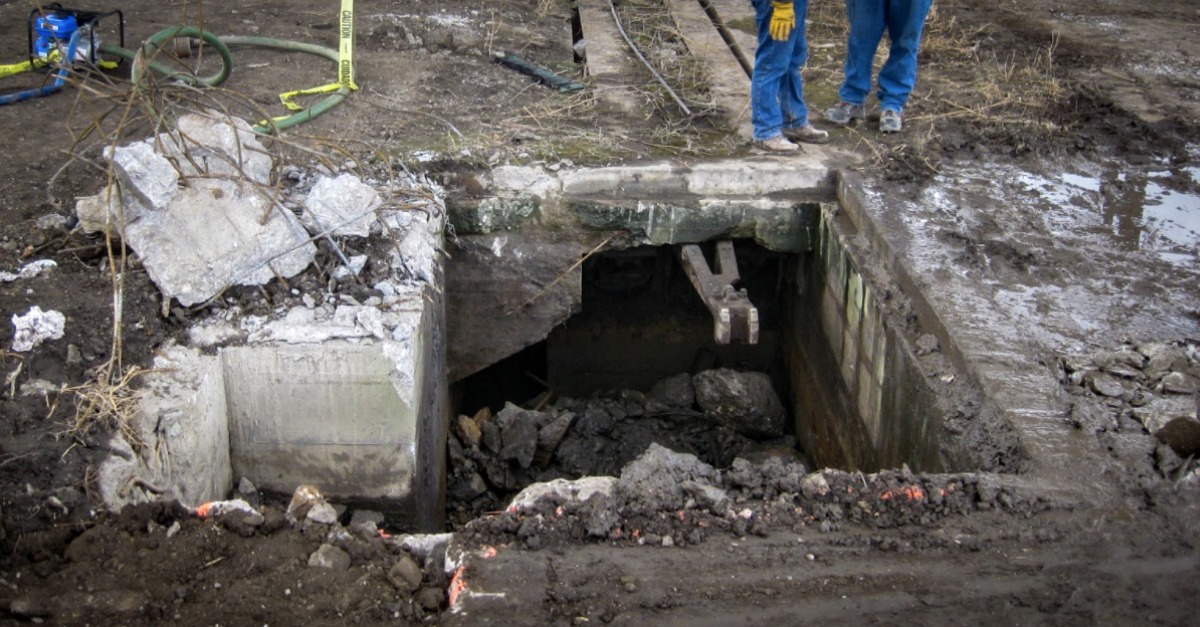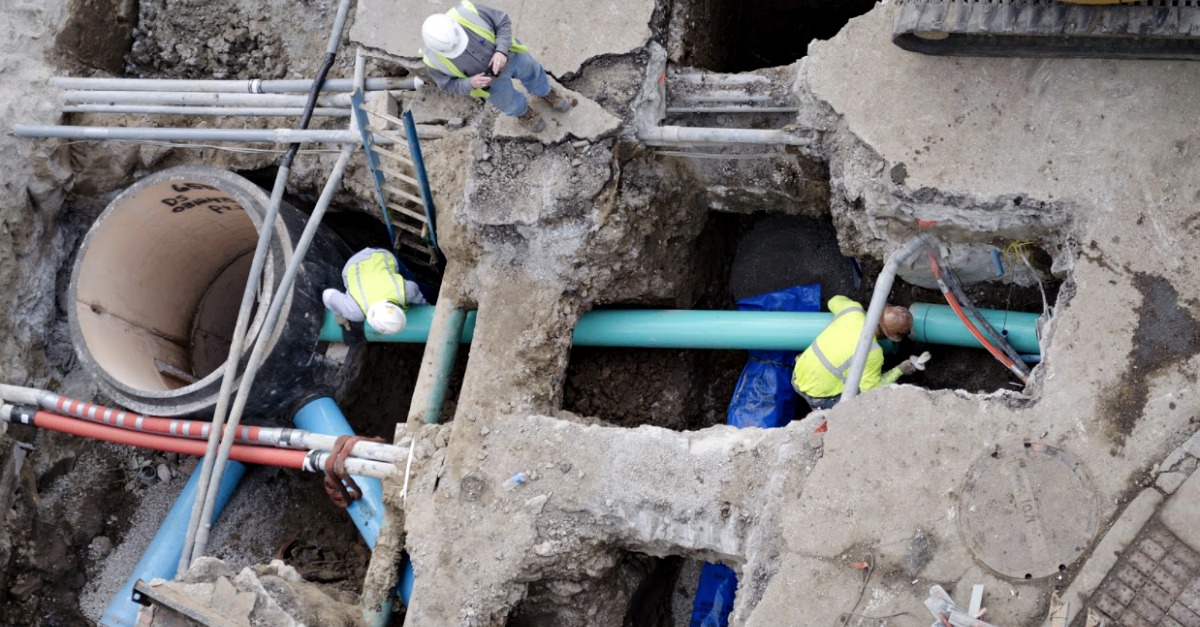As Kansas City’s downtown revitalization movement rides south on the success of the KC Streetcar, developers have their eye on the KC Crossroads District and all the opportunities around it. Before new construction can begin in the area, a good look at the complicated subgrade must be thoroughly investigated by local geotechnical engineers familiar with the territory. Ignoring the unique challenges in the Crossroads subgrade could waste time and money and ultimately end up in disaster. Natural conditions are difficult enough, and as you’ll see in this edition of our continuing blog series, man-made factors often make construction challenges even harder.
A Delicate Maze of Infrastructure
Some of Kansas City’s most well-known historic buildings are located in the heart of the KC Crossroads District, and there’s a lot of history beneath them too. Elements of water and sewer infrastructure date back to the old west in the late 19th century! Many generations of Kansas Citians have patched together a meandering system of pipes and tunnels to control waste and carry water, with some running as deep as the Missouri River and stretching beyond the northland.
Dig into the subgrade and you’ll find infrastructure snaking in every direction, connected, overlapped, and twisted all around. The entire configuration is extremely fragile and sudden breaks routinely occur. Workers digging around it must be extremely careful to avoid triggering problems. It’s not uncommon for crews to deal with patching and repairing pipes as they move through the ground focused on other goals.

Kissick Construction carefully navigated a complicated underworld during the construction of the first phase of the KC Streetcar line.
Running beneath Union Station to the east, the OK Creek diversion tunnel anchors a big part of the sewer system in Kansas City’s Crossroads. Many consider OK Creek the first sewer in Kansas City. In the 1850s, it was little more than a wooden ditch and eventually became part of the City’s long-term efforts to tame the land for easier living and improved transportation.

OK Creek in the late 1800s was becoming a free-flowing mess in the Crossroads area. Photo courtesy: Missouri Valley Special Collections, Kansas City Public Library, Kansas City, Missouri.
Generations of Kansas Citians labored to raise and lower uneven bluff and valley terrain to make it all more practical for horses, wagons, trains, and eventually automobiles. OK Creek eventually found its place underground. Around 1910, it was straightened, fully enclosed in concrete, and buried 100 feet down to make way for the construction of Union Station.

Underground construction of sewer at OK Creek and Main Street around 1910. Courtesy: Missouri Valley Special Collections, Kansas City Public Library, Kansas City, Missouri.
Since then, the OK Creek diversion tunnel has curbed much of the flooding in the Crossroads area and now carries waste more efficiently toward the river. But the tunnel and other sections of the sewer and water system are showing signs of age. Breaks are more common as time passes by and leaks are a constant challenge. Underground water pools and unpredictable horizontal flows along rock deposits make digging a gamble and construction substantially more difficult.
Even more pipes may be found running from old steam heating systems. There are old coal chutes too, an array of other industrial relics, and of course, miles of modern fiber cabling tightly wrapped throughout. Any way you look at it, the area is a plate of infrastructure spaghetti that’s been expanded, changed, patched, and repaired for more than a hundred years.

Fiber cables are strung along and around existing infrastructure underground in many cities.
Builders might have some luck tracking down records that show what’s below the surface of their development site, but no real reliable documentation exists and much of what’s down below was put there before Kansas Citians began keeping records. When record-keeping finally came along, it still wasn’t very accurate. And while modern documentation platforms have improved the process, most only show fragmented pieces of a much bigger picture. The only way to be sure about what’s in your location’s subgrade is to have a comprehensive geotechnical investigation performed.
Urban Fill Full of Surprises
Adding to a complicated subgrade of the KC Crossroads is a widespread layer of urban fill material. It consists of demolition debris and other unusual objects that’s been packed into the ground for decades while Kansas City has continued to build over it.
Rather than remove the remains of houses and buildings after demolition, people used to simply cram the debris into the ground and only haul away what wouldn’t fit. In some cases, debris from many demolition projects would be dumped in the same location. Years later, this “dumping ground” wound up becoming the site of Union Station.
The construction of Union Station transformed an enormous amount of the subgrade. But don’t expect to find pristine geology or soil around anymore. Everything has been manipulated, removed, added, or changed by humans and machines.

1911 early view of the Union Station construction site shows a scarred landscape heavily manipulated and dramatically reshaped by human hands. OK Creek is still visible in the foreground. Photo courtesy: Missouri Valley Special Collections, Kansas City Public Library, Kansas City, Missouri.
There’s no way to know exactly what you’re dealing with until you dig in and explore urban fill at a specific location. Much like industrial brownfields we’ve conquered in other parts of Kansas City, urban fill may contain objects that can shift or collapse and compromise the ground’s stability.

AOG crews have guided projects around the discovery of entire underground rooms posing subgrade risks in old industrial areas of Kansas City.
We’ve come across huge surprises that dramatically raised risks. Car parts, rusted steel drums, tree trunks, shingles, bricks, chunks of concrete, rebar, and even entire cars have been found impeccably buried beneath the earth’s surface. Discoveries like these can quickly slow a project down, which is why we’re continuously developing alternative support platforms engineered specifically for subgrades with urban fill obstacles.
Put Geotechnical Veterans on the Front Lines
Many have tried but none have found much success in acquiring an accurate subgrade analysis for a building site downtown or in the KC Crossroads. Whether it’s drilling, testing, or collecting samples from the field, it’s critical for project leaders to stay on top of conditions underground. In Kansas City’s core, there’s no telling what you’ll find at any specific location. And finding out is a task best left to an experienced geotechnical team that isn’t easily rattled by surprises. Since every piece of property is different, having a local geotechnical engineer by your side can pay off long after your project is complete.
Our geotech reports contain critical information project leaders refer to during all phases of design and construction, and frequently after completion of a project to resolve claims.
We’ve earned the trust of many industry leaders who partner with us over and over to navigate Kansas City’s unusual underground challenges. We’re known for quick problem-solving without losing sight of project goals. As new development continues to spark innovation in the Crossroads, we’re prepared to dig down deep to bring new visions to life.

Special thanks to Kissick Construction for the construction photos.

